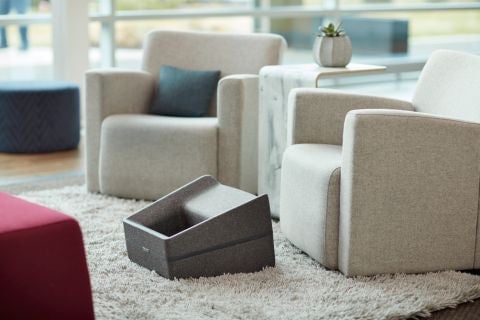Working from your bed is better than slumping at the kitchen table
Here’s a new reason to stay in bed today: working in a reclined position might just save you from back pain.


Here’s a new reason to stay in bed today: working in a reclined position might just save you from back pain.
“As long as you have something (like a tray) that props your laptop to the right level, I really don’t mind it,” explains Kevin Butler, the chief ergonomist expert at Steelcase, the largest office furniture manufacturer in Europe and North America in terms of revenue, and a long-time telecommuter. There are, of course, psychological pitfalls of working where we sleep, but a bed will often offer better lumbar support than slumping on a low table. “Would I prefer the bed over the kitchen table? Probably,” attests Butler.
Butler’s advice comes during a time when knowledge workers around the world are scrambling to find the right work-from-home configuration, amid Covid-19 self-quarantine and social distancing mandates. Typing on a laptop at a kitchen table often results in back pain because the spine contorts in the opposite direction from its natural S-shape when we sit. Working in bed, propped up on pillows—a work stance preferred by the likes of Marcel Proust, Edith Wharton, Truman Capote and apparently 80% of millennials—that rotation is not nearly as significant. “I’m all in if you want to work in bed in short bursts.”
“Short bursts” is a core idea here. Switching postures throughout the day is a fundamental principle of ergonomics, the practice of designing optimal workspaces that consider the physiological needs of workers. Moving round is essential even if we think we’ve found a perfectly comfortable position, says Butler. Ideally, we should change our positions every 15 minutes, but practicing the sit-stand-move rule as often as we can help.
🎧 For more intel on ergonomics, listen to the Quartz Obsession podcast episode on office chairs. Or subscribe via: Apple Podcasts | Spotify | Google | Stitcher.
A quality task chair will always offer the best lumbar support, adds Butler. But for those living in small apartments without the luxury of a home office, or those who suddenly have to share work spaces with kids and partners, “working in bed is not the end of the world.” He says that this period of forced remote working offers a rare opportunity to reexamine our notions about the most optimal work styles: “For the first time ever, people actually have a fighting chance to figure out how they want to get work done.”
Ergonomics and aesthetics: Office furniture for the home
In recent years, several office furniture companies have tried to develop pieces with a casual, homey aesthetic, as an antithesis to formal corporate interiors. Designers call the trend “resimercial,” a clunky portmanteau of “residential” and “commercial” reflected in the offices of trendy start-ups and co-working spaces.
Unfortunately, most manufacturers have mostly focused on lounge seating for lobbies or casual team meetings. We see this in Steelcase’s partnership with the home furniture retailer West Elm or Room & Board’s business interiors collection. No one has yet to introduce an ergonomic office chair that doesn’t look so out of place in the kitchen or a living room. Many task chairs still look like “machines for sitting,” a template established by Herman Miller’s bestselling Aeron chair 25 years ago.

But as this period of working from home continues, the need for residential furniture that offers the ergonomic support of a task chair becomes more evident. After all, who wants to crowd their living rooms with office chairs?
Until then, Butler offers a hack, especially for those who eschew working in bed. A club chair paired with a foot rest should offer sufficient ergonomic support. Lifting our feet tends to force us to tuck into our seats, which is good for our backs. “Foot rests have a reputation that only short people need them, but they’re actually pretty awesome for giving anyone more back support,” he says.
No matter where you’re sitting—a desk, the couch, a club chair, a kitchen chair, or the bed—the key is switching spots as often as possible. “Duration is really correlated to pain. If you can change your posture often, you’ll probably avoid discomfort altogether,” says Butler, who spoke to Quartz while pacing around in his home in Peoria, Illinois. “The opposite of sitting isn’t actually standing. It’s moving.”